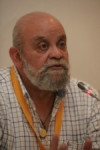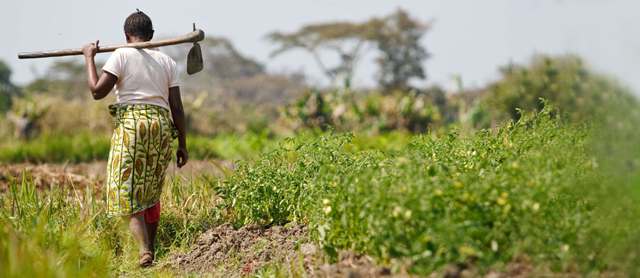Forests: To Farm or Not to Farm? This Is the Question!
ENVIRONMENT, 1 Aug 2016
Baher Kamal – Inter Press Service-IPS
 19 Jul 2016 – The dilemma is critical: on the one hand, there is an absolute need to produce more food for the world’s steadily growing population; on the other, there is pressing urgency to halt -and further revert- the increasing trend to deplete the forests, which are as necessary for human survival as it is for ensuring their dietary needs.
19 Jul 2016 – The dilemma is critical: on the one hand, there is an absolute need to produce more food for the world’s steadily growing population; on the other, there is pressing urgency to halt -and further revert- the increasing trend to deplete the forests, which are as necessary for human survival as it is for ensuring their dietary needs.
So what is at stake ? Forests play a major role in sustainable agricultural development through a host of channels, including: water cycle, soil conservation, carbon sequestration, natural pest control, influencing local climates and providing habitat protection for pollinators and other species.
But agriculture accounts for the lion’s share of the conversion of forests. In the tropics and subtropics large-scale commercial agriculture and local subsistence agriculture are responsible for about 40 per cent and 33 per cent of forest conversion, respectively, and the remaining 27 per cent of deforestation happens due to urban growth, infrastructure expansion and mining.
How to achieve the two vital objectives? The top United Nations organisation dealing with food and agriculture speaks loud and clear while providing specific data.
“While agriculture remains the most significant driver of global deforestation, there is an urgent need to promote more positive interactions between agriculture and forestry to build sustainable agricultural systems and improve food security, says UN Food and Agriculture Organisation (FAO).
This has been the key message of the FAO flagship publication The State of the World’s Forests, presented on July 18 at the opening of the one-week Session (Rome, 18-22 July) of the FAO Committee on Forestry (COFO).
“The 2030 Agenda for Sustainable Development, as well as the Paris Agreement on climate change, recognises that we can no longer look at food security and the management of natural resources separately,” says FAO Director-General José Graziano da Silva.
“Both agreements call for a coherent and integrated approach to sustainability across all agricultural sectors and food systems. Forests and forestry have key roles to play in this regard. The key message from SOFO is clear: it is not necessary to cut down forests to produce more food,” Graziano da Silva added.
But while agriculture plays a major role in the on-going conversion of forests, FAO’s report stresses that forests serve many vital ecological functions that benefit agriculture and boost food production.
“Food security can be achieved through agricultural intensification and other measures such as social protection, rather than through expansion of agricultural areas at the expense of forests,” says Eva Müller, Director of FAO’s Forestry Policy and Resources Division.
“What we need is better cross-sectoral coordination of policies on agriculture, forestry, food and land use, better land use planning, effective legal frameworks, and stronger involvement of local communities and smallholders.”
According to Müller “Governments should provide local communities not only with secure land tenure but also with secure forest tenure rights. A farmer knows best how to manage his or her own resources but often lacks legal instruments to do so.”
How to Improve Food Security While Halting Deforestation
The fact is that well-managed forests have tremendous potential to promote food security. Besides their vital ecological contributions, FAO reports, forests contribute to rural livelihoods and poverty alleviation through income generated by engaging in the production of forest goods and environmental services.
Not only – approximately 2.4 billion people rely on wood-fuel for cooking and water sterilisation. And forest foods provide protein, minerals and vitamins to rural diets and can also serve as safety nets in periods of food scarcity.
According to The State of the World’s Forests report, since 1990, over 20 countries succeeded in improving national levels of food security while at the same time maintaining or increasing forest cover – demonstrating that it is not necessary to cut down forests to produce more food.
Twelve of these countries increased forest cover by over 10 per cent: Algeria, Chile, China, the Dominican Republic, the Gambia, Islamic Republic of Iran, Morocco, Thailand, Tunisia, Turkey, Uruguay, Viet Nam.
“Their successes all relied on a similar set of tools: effective legal frameworks, secure land tenure, measures to regulate land-use change, policy incentives for sustainable agriculture and forestry, adequate funding, and clear definition of roles and responsibilities of governments and local communities.”
Successful Case Studies
The report cites case studies from seven countries –Chile, Costa Rica, The Gambia, Georgia, Ghana, Tunisia and Viet Nam– that illustrate the opportunities for improving food security while increasing or maintaining forest cover.
Six of these countries achieved positive change in the period 1990-2015 in two food-security indicators – the prevalence of undernourishment and the number of undernourished people – as well as increases in forest area.
The report explains as follows the case of some of these countries:
The Gambia, the only low-income country among the seven, succeeded in achieving the first goal of halving the proportion of hungry people within the same period.
Viet Nam, for example, has implemented a successful land reform to provide secure land tenure as a way of encouraging long-term investment.
This process was accompanied by a shift from state forestry to multi-stakeholder forestry with the active participation of local communities including a forest land allocation programme and forest protection contracts with local households.
The land reform was also coupled with policy instruments to increase agricultural productivity, including land tax exemptions, soft loans, export promotion, price guarantees, support for mechanisation and reductions in post-harvest losses.
In Costa Rica, deforestation reached its peak in the 1980s, mainly due to the conversion of forest cover to pastures.
The country has since reversed this trend largely due to the forest law, which now prohibits changes in land use from natural forest, and its system of Payments for Environmental Services, which provides farmers with incentives to plant trees, and supports forest conservation.
As a result, forest cover has increased to nearly 54 per cent of the country’s land area in 2015.
In Tunisia national development plans recognise the beneficial role of forests in protecting land against erosion and desertification.
There, agricultural production has increased through intensification that makes better use of existing agricultural land through irrigation, fertilisers, mechanisation, improved seeds and better farming practice. Incentives for establishing forest plantations in the country include free seedlings and compensation for the loss of agricultural income.
The key themes of the FAO Committee on Forestry session seek to respond directly to the milestone agreements of 2015 and investigate how forests and sustainable forest management can contribute to the achievement of the internationally agreed development goals.
Together with the World Forest Week, the committee considers how the full potential of forests, including forests’ contributions to livelihoods, food security, jobs, gender equality and many other global development goals including the 2030 Agenda and the Paris Agreements, can best be unlocked.
_________________________________
Baher Kamal, Egyptian-born, Spanish national secular journalist. He is founder and publisher of Human Wrongs Watch. Kamal is a pro-peace, non-violence, human rights, harmonious coexistence defender among human beings and with Nature, with more than 43 years of professional experience. With these issues in sight, he covered practically all professional posts, from correspondent to chief editor of dailies and international news agencies.
DISCLAIMER: The statements, views and opinions expressed in pieces republished here are solely those of the authors and do not necessarily represent those of TMS. In accordance with title 17 U.S.C. section 107, this material is distributed without profit to those who have expressed a prior interest in receiving the included information for research and educational purposes. TMS has no affiliation whatsoever with the originator of this article nor is TMS endorsed or sponsored by the originator. “GO TO ORIGINAL” links are provided as a convenience to our readers and allow for verification of authenticity. However, as originating pages are often updated by their originating host sites, the versions posted may not match the versions our readers view when clicking the “GO TO ORIGINAL” links. This site contains copyrighted material the use of which has not always been specifically authorized by the copyright owner. We are making such material available in our efforts to advance understanding of environmental, political, human rights, economic, democracy, scientific, and social justice issues, etc. We believe this constitutes a ‘fair use’ of any such copyrighted material as provided for in section 107 of the US Copyright Law. In accordance with Title 17 U.S.C. Section 107, the material on this site is distributed without profit to those who have expressed a prior interest in receiving the included information for research and educational purposes. For more information go to: http://www.law.cornell.edu/uscode/17/107.shtml. If you wish to use copyrighted material from this site for purposes of your own that go beyond ‘fair use’, you must obtain permission from the copyright owner.


